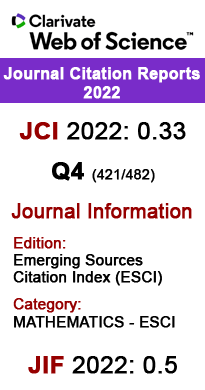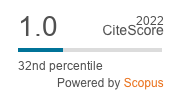Malaysian Journal of Mathematical Sciences, September 2022, Vol. 16, No. 3
Comparative Mathematical Study of Blood Flow Through Stenotic and Aneurysmatic Artery with the Presence and Absence of Blood Clots
Uddin, M. N., Uddin, M. M., and Alam, M. M.
Corresponding Email: nasiruddin@bup.edu.bd
Received date: 26 June 2021
Accepted date: 14 July 2022
Abstract:
Numerical predictions of blood flowand hemodynamic properties through stenosis and aneurysm
artery have been studied in the presence of blood clots at the constricted area. The finite element
method has been used to solve the partial differential equations of continuity, momentum,
Oldroyd-B, and bioheat transport in cartesian coordinates systems. The present investigation
carries the potential to compute blood velocity, pressure, and drag coefficients with significance
at the throat of stenosis and aneurysm. The models have also been employed to study simulation,
blood clots, and hemodynamic characteristics for all modifications. The impact of shearthinning
on blood flow is intensified compared to the viscoelastic properties. It is found that the
maximum effect of the drag coefficient is visible at the hub of stenotic for nonclotting models.
The highest pressure and the lowest velocity are gained for the presence of blood clots at the
constraint area. The impact of stenosis and aneurysm artery, drag coefficient, and blood clots
on blood flow is the main physical outcome that may be reported in medical science to identify
atherosclerosis diseases. The quantitative analysis has been completed numerically with
the physiological significance of hemodynamic factors of blood flow which shows the validity
of the present model.
Keywords: setnotic and aneurysmatic arter; finite element method; cardiovascular disease; blood clots









